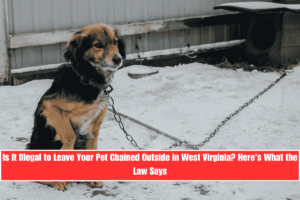Welch, the county seat of McDowell County, has been named the poorest town in West Virginia—a distinction that reflects both the deep-rooted economic challenges of the region and the broader struggles facing much of rural Appalachia. The story of Welch and McDowell County is one of dramatic transformation: from a thriving coal-mining hub in the early 20th century to a community now grappling with persistent, generational poverty.
Economic Decline and Demographics
Once a bustling center of industry, Welch’s fortunes were closely tied to coal mining. In the 1950s, McDowell County was the leading coal producer in the United States, with coal mines providing stable, well-paying jobs for thousands. However, mechanization, industry decline, and the collapse of major employers like US Steel in the 1980s led to a sharp economic downturn. The population plummeted as jobs disappeared, and the area’s infrastructure and social fabric began to unravel.
Today, Welch’s population has dwindled to just over 3,300, down from its mid-century peak. The city’s poverty rate is 26.77%, with a median household income of only $36,188 and an average per capita income of $29,261. These figures are starkly lower than state and national averages. In McDowell County as a whole, the poverty rate is even higher—estimated at 31.7% to 37.6%—making it not just the poorest county in West Virginia, but one of the poorest in the entire country.
Living Conditions and Social Impact
The economic hardship in Welch is reflected in its housing, education, and health outcomes. Over 70% of the city’s housing stock was built before 1960, and virtually no new construction has occurred since the mid-1990s. Many homes are in disrepair, and a quarter of households lack access to a vehicle. Educational attainment is low: 16% of residents over 25 have less than a ninth-grade education, and another 21.8% did not complete high school.
Unemployment remains high, with the official rate at 9.5%—but more than 60% of the population is not counted in the labor force. Health care access is limited, and the area has been classified as a “food desert” by the USDA, with few grocery stores and limited financial services. The closure of major employers, including the county’s only Walmart in 2016, has further strained the local economy.
Persistent Poverty and Its Effects
Welch’s struggles are emblematic of persistent poverty—defined by the U.S. Census Bureau as a poverty rate above 20% for three decades or more. In McDowell County, poverty has not only persisted but deepened, with children and families particularly affected. Over 40% of families with children in Welch live below the poverty line, and 75% of families with young children face poverty. These conditions contribute to cycles of disadvantage, impacting educational attainment, health, and long-term economic mobility.
Welch stands as a poignant example of the challenges facing many rural American communities in the post-industrial era. Its designation as the poorest town in West Virginia is rooted in decades of economic decline, job loss, and social disinvestment. While there are efforts to revitalize the area, Welch’s story is a reminder of the enduring impact of structural economic change and the need for sustained, comprehensive solutions to break the cycle of poverty.
Sources
[1] https://www.wvencyclopedia.org/entries/1850
[2] https://worldpopulationreview.com/us-cities/west-virginia/welch
[3] https://www.wsws.org/en/articles/2010/08/welc-a03.html
[4] https://mountainstatespotlight.org/2024/01/16/heres-what-persistent-poverty-looks-like-in-west-virginia/
[5] https://en.wikipedia.org/wiki/McDowell_County,_West_Virginia


















Leave a Reply